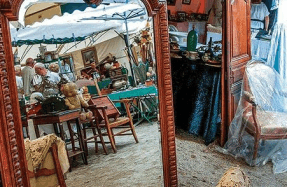
Buyer's Guide
During the late 1600s, displaying a longcase clock in the hall was rather like parking a Lamborghini on the drive today. Longcases were powerful status symbols, and at the cutting edge of technology.
Leigh Extence, a Devon-based horologist, explains that early longcases were part of a revolution in clockmaking. Until 1656, when Dutchman Christiaan Huygens invented the use of a pendulum to drive the mechanism, clocks didn't keep time very effectively. 'Then in the late 17th century, English makers like Thomas Tompion, Joseph Knibb and Edward East found ways to improve pendulum clocks. They were clockmaking geniuses - theirare bought by very serious collectors, with a deep knowledge of clockmaking. On the rare occasions they come up for sale they can make hundreds of thousands of pounds.'




